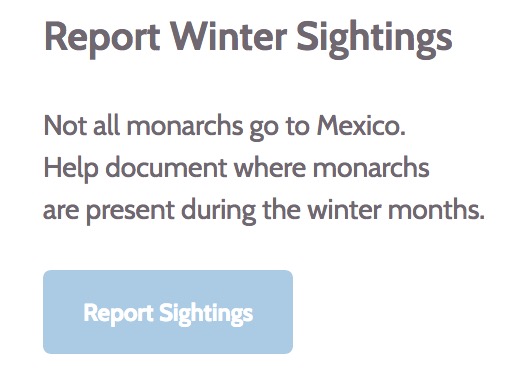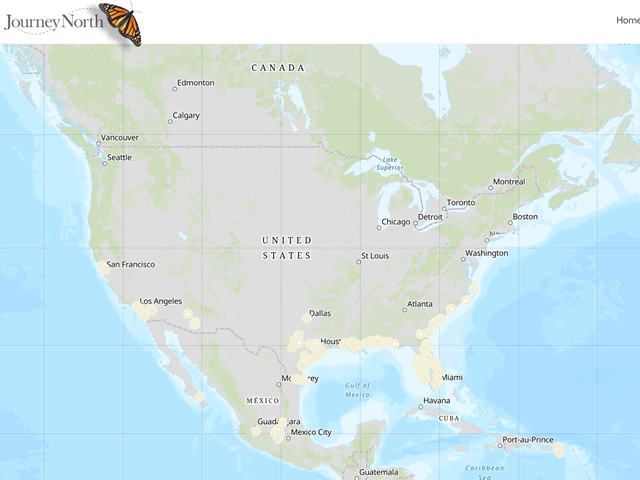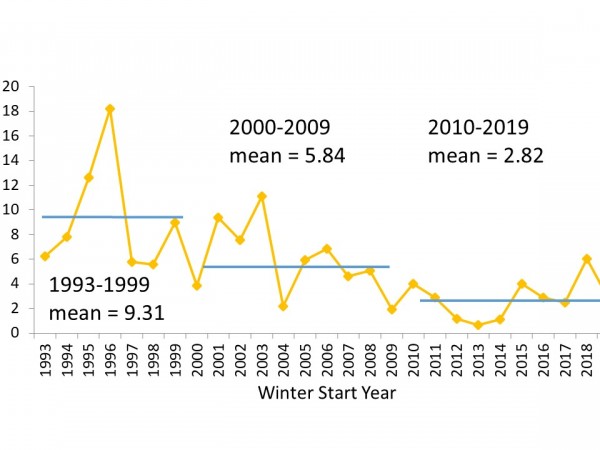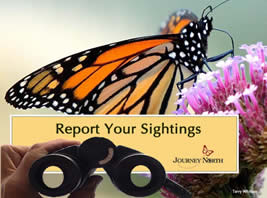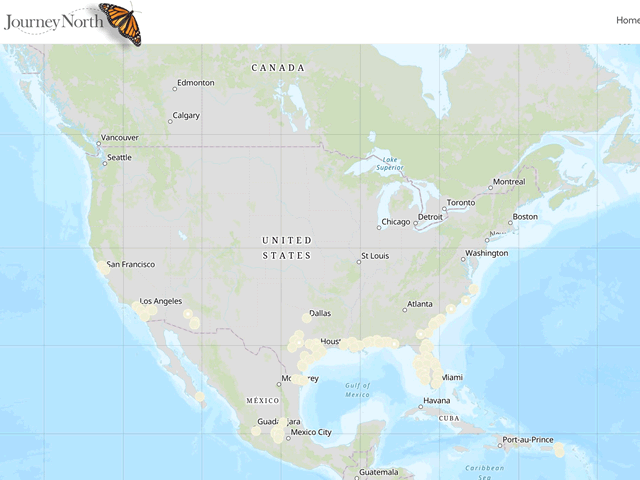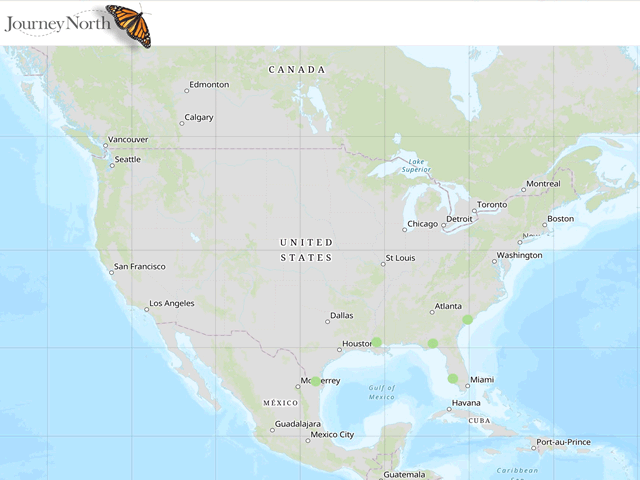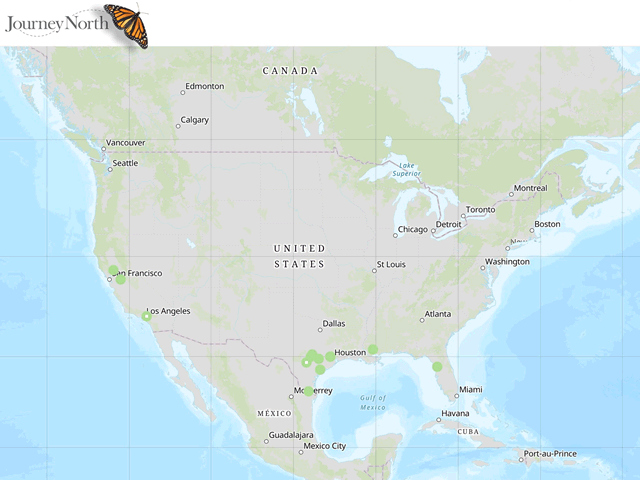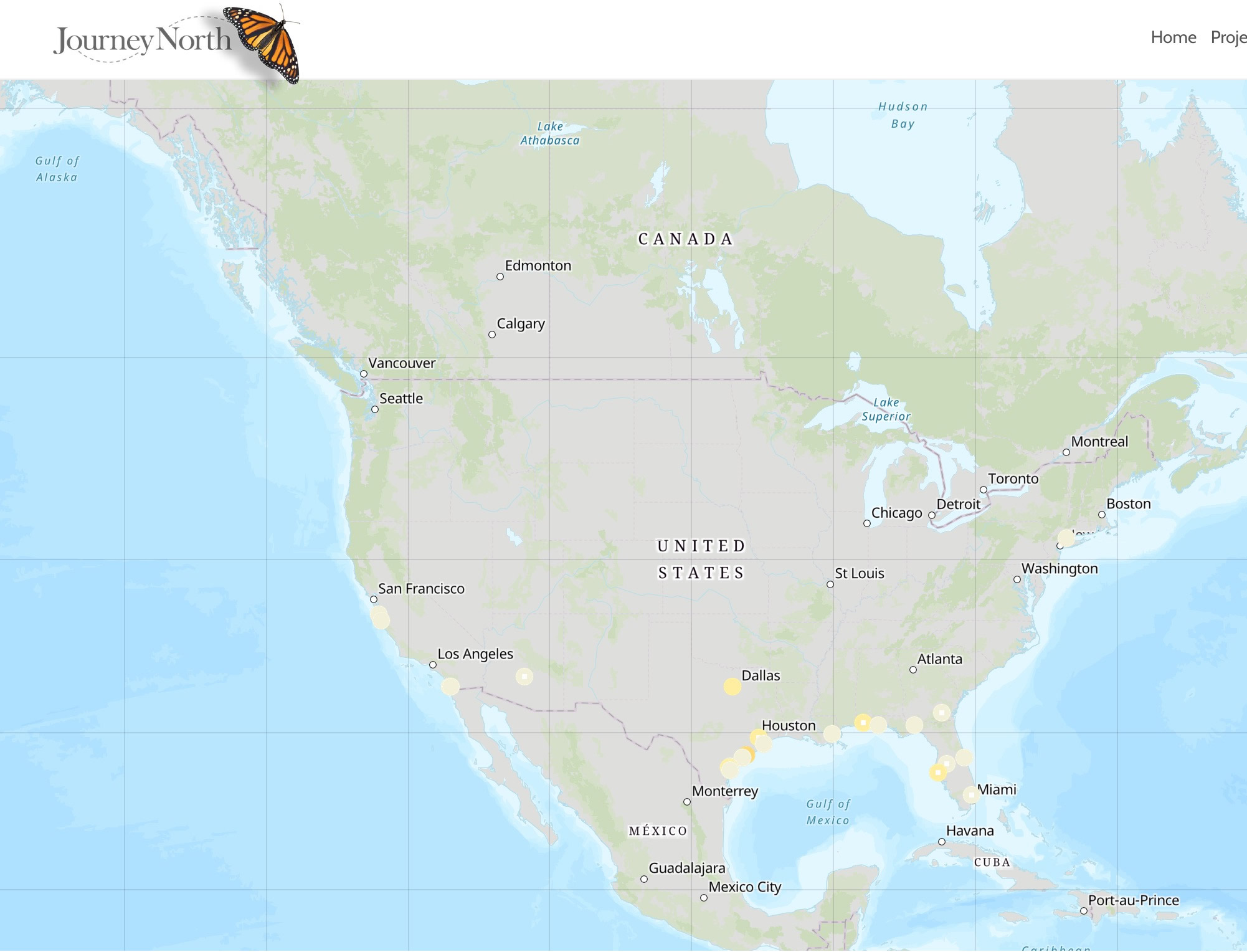Special Message From Dr. Karen Oberhauser
Dear Journey North members,
By now you have probably heard that the forest area occupied by monarch in Mexico was down from last year, to 2.83 hectares (WWF- Mexico and the Comisión Nacional de Áreas Naturales Protegidas (CONANP)). In summary, the area occupied by monarch butterflies represented a 53% decrease from last year. The 2.83 ha include 11 monarch butterfly colonies measured in late December 2019, three in Michoacan and eight in the State of Mexico. Most of the area occupied (2.46 hectares) was located within the Monarch Butterfly Biosphere Reserve.
WWF-Mexico, "The Monarch butterfly reduced by 53% its occupation in the Mexican hibernation forests." Read full article here
Also see Monarch Joint Venture and Monarch Watch.
To put this in historical perspective, I’ve created a graphic that provides decade means (with only 7 years included in the first “decade”, due to a lack of earlier data). See Figure 1. There are big year-to-year fluctuations that probably result from year-to-year weather fluctuations during the breeding, migratory, and wintering phases of the annual cycle. Thus, simply saying that the population decreased 53% from last year is not very informative. The long-term average since the colonies were first measured is 5.62 hectares. The mean for the past decade is 2.82 ha, almost exactly what was measured this year. Thus, 2019 was an average year for monarchs over the past decade. But this decade represents a big drop from previous decades—with means of 5.84 ha from 2000-2009, and 9.31 ha for the first 7 years that the colonies were measured.
Data from this year are a stark reminder that a single high year does not mean that the population has recovered. They are also a reminder that monarch numbers reflect habitat availability and weather conditions throughout the annual cycle particularly conditions monarchs faced during the fall migration and in the wintering sites.
Over the long term, there is a strong correlation between numbers in breeding grounds and winter numbers, but the tightness of the relationship varies from year-to-year. Available data and threats analyses suggest that weather conditions, habitat availability, and monarch numbers in the summer are important drivers, but we know that monarchs produced in the summer need to migrate successfully and survive the winter as well. Data from this year, combined with those from past years, may help us understand migratory and winter drivers better.
These numbers, and the need to understand their drivers, mean that our work isn’t done. We need to keep collecting data so that our understanding of monarch numbers and ways to build the population is based on accurate and up-to-date information. Current modeling suggests that habitat availability is a limiting factor for monarchs, so our efforts to increase breeding and migratory habitat are critical.
Please continue to:
- create habitat wherever you can,
- educate others about monarch conservation actions,
- participate in citizen science programs like the Journey North, Project Monarch Health, Monarch Watch, Monarch Larva Project and other butterfly monitoring groups,
- advocate for the restoration and protection of wild spaces, and
- support organizations working to sustain monarchs.
I hope that you are doing well during the recent and rapidly changing complex world situation. I learned about the spread of pathogens through susceptible populations when Dr. Sonia Alitzer, the founder and director of Project Monarch Health, was a graduate student in my lab studying Oe (Ophryocystis elektroscirrha, a protozoan parasite) and monarch populations. The current situation is a reminder of how connected we all are to the natural world, and how much we can learn from studying the organisms with which we share it.
All my very best,
Karen Oberhauser
Dr. Karen Oberhauser is Professor and Director of University of Wisconsin Madison-Arboretum, chair of the Steering Committee of the Monarch Joint Venture, an officer and founding member of the Monarch Butterfly Fund, and a member of state and national organizations focused on pollinator conservation, and citizen science.
Monarchs & Milkweed Spring / Summer Maps
After FIRST sightings, please report:
- Monarch Adult Sighted
- Milkweed Sighted
- Monarch Egg Sighted
- Monarch Larva Sighted
- Monarch (OTHER observations) *including behaviors such as mating and nectaring

